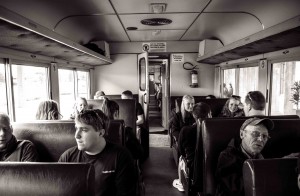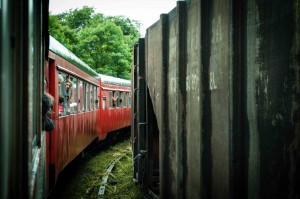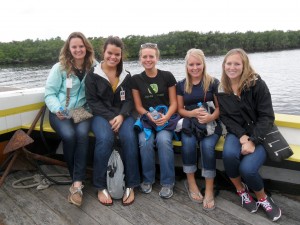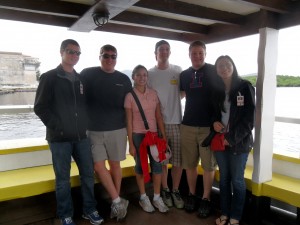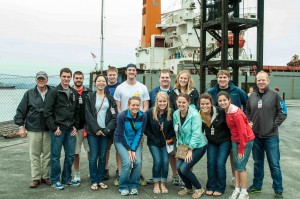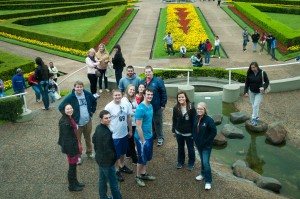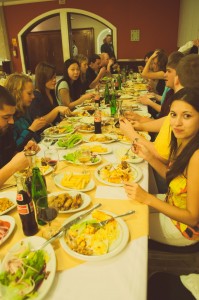By Kelsey Abbott, Fernanda de Barros Dias, and Zach Orwig
January 11, 2013
It was a rainy day in Rio which is unlucky for us considering rain is usually hard to come by in Rio. About half of the group went on a bus tour this morning to see some of the sights of Rio including the famous Christ the Redeemer statue high atop the city, the street festival preparations for Carnival, and the sugar loaf mountain and cable car excursion. Cristo Redentor (Christ the Redeemer) is only accesible by a long, near vertical train ride up the mountain it stands atop or a bumpy van ride that zig-zags up the side of the mountain. But once there, the view of the entire city and ocean is absolutely breathtaking. The sugar loaf mountain cable car ride was very foggy, but there were still many great photo opportunities. This group also drove past the 2014 World Cup Soccer arena, however, it was under re-construction, so not as exciting as getting to step on the field would have been.
The other half of the group headed to the famous Copacabana beach. Our hotel was less than a block away from the beachfront. Although it was raining most of the morning, there was a brief break that the group was fortunate enough to take advantage of. We swam for a couple hours and were even suave enough to bargain for a Brazilian flag from a street vendor.
The beach was so empty today that it almost felt like our own private beach! After resting until mid-afternoon the group headed to a small street market to find some Brazilian treasures. Vendors were selling anything from souvenir t-shirts to jewelry to colorful paintings of the beautiful city. Kelsey, Zach, and Mason all found glasses with Brazilian and Olympic symbols on them. Overall many goods were purchased with our monkey dollars for people back home…so get excited! (Brazilian reals have pictures of animals on them, including monkeys, on them hence the monkey dollar term, coined by Mason).
Without Nadiel around, Ana is handling us in Rio. Due to a bad restaurant suggestion from the hotel receptionist and potentially some translation barriers, we ended up at a dinner restaurant that was going to cost way more than our budget and consist of feijoada. Feijoada is a traditional Brazilian dish served in the winter (mind you it’s summer in Brazil), and includes many cuts of pork trimmings including the feet and ears. We decided to trek back towards our hotel and settle for one more buffet.
People are tired, monkey dollars are running thin, and we’re ready to be home. One more day of rest and relaxation and then it’s back to reality for us.


